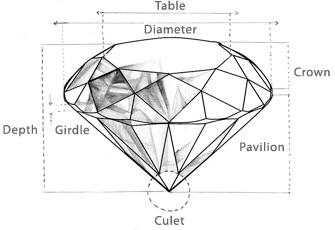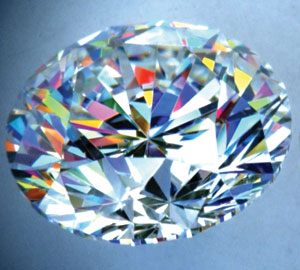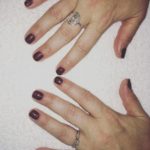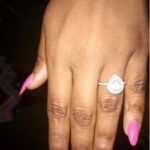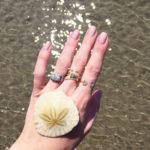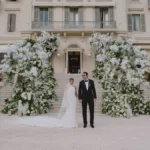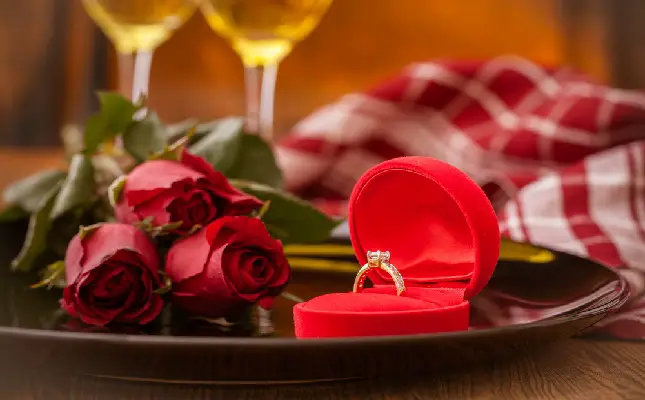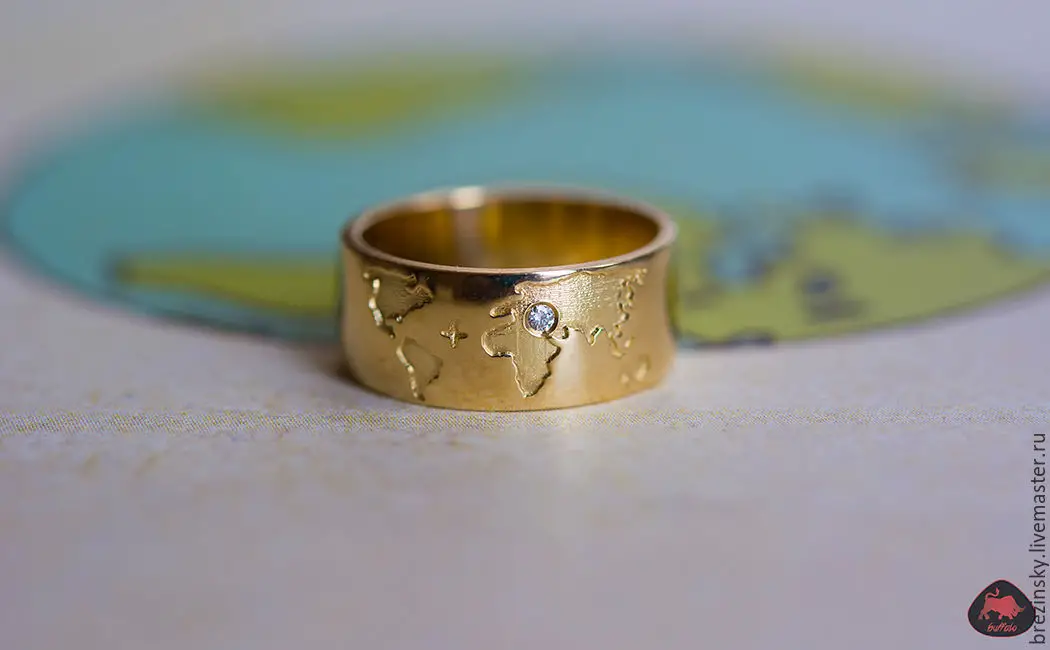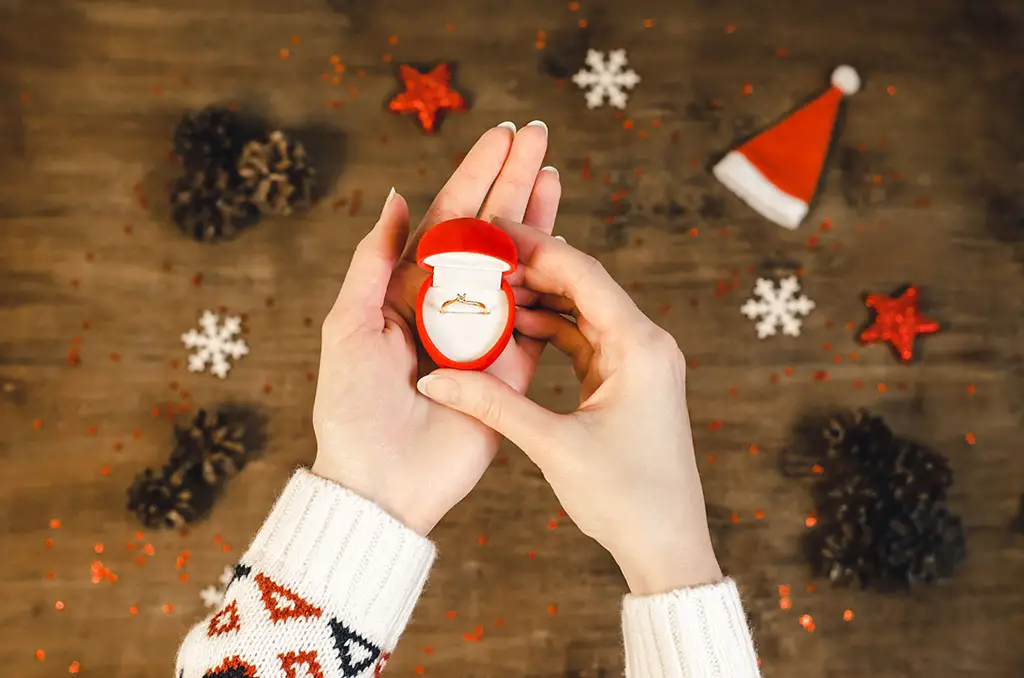Getting engaged (or planning a proposal) brings about one particular rite of passage: engagement ring shopping! A lot of people fail to realise that there’s more to this than walking into a jewellery store, picking out a nice diamond and handing over a wad of cash. There’s lots more to consider, from finding the right diamond to picking a setting and everything in between. The former is the most confusing of the lot, so we’ve put together a handy diamond jargon buster to take away some of the stress…
First, the 4Cs
Carat: A carat is the unit of weight that a diamond is measured by. One carat is equal to 200 milligrams. In other words, the higher the carat number the heavier (and thus bigger) the diamond. Prices shoot up accordingly around ‘magic’ carat numbers like 0.5 1, 1.5, 2, etc. If you want to save money, consider choosing a diamond that’s 0.8 carats rather than 1 – the size difference will be barely noticeable.
Clarity: This refers to the internal and external characteristics of the diamond when viewed under magnification. No diamond is completely flawless due to their natural formation process, so they are graded by clarity. A diamond with very few inclusions (flaws) is considered to have near perfect clarity, and is valued accordingly. Keep in mind that in most cases, these flaws aren’t visible to the naked eye.
Colour: Yes, generally speaking diamonds are colourless. But some are ‘more’ colourless than others! In fact they range from the transparency we’re all familiar with to a greyish or yellowish tint. As with clarity and cut (see below), this is graded. A diamond with no tint whatsoever is colourless, i.e. ideal, however diamonds from the opposite end of the scale can be very beautiful too, so don’t immediately disregard them.
Cut: This actually refers to a diamond’s proportions rather than its shape (round, princess, emerald, etc.), but the term is often used for both. To refract light and give off the best ‘sparkle’, diamonds need to be cut with a certain amount of facets and with certain proportions. It’s an extremely skilled art! Cuts are also graded from ‘excellent’ down to ‘poor’ in the same way as clarity. This is the most complicated of the 4Cs, but after looking at some examples you’ll be able to identify a good cut when you see one!
Diamond Anatomy 101
Cloud: Believe it or not, diamonds can have clouds. A cloud is a cluster of tiny inclusions on the interior of the diamond that are too small and positioned too closely together to be individually identified. Like most inclusions, they are invisible to the naked eye. This isn’t a term that’s used very regularly – jewellers will usually just refer to them as singular inclusions – but you may come across it from time to time nonetheless.
Crown: The crown of a diamond is the upper half of it; everything above the girdle (see below). The crown consists of the top ‘table’ of the diamond and the facets. In engagement rings, the crown is the part that’s on show and is where the light enters and leaves. The ‘crown angle’ refers to the angles at which the facets of the crown are positioned. This determines how light passes through the stone and how much ‘brilliance’ (sparkle) it has.
Culet: Some shapes of diamonds such as round brilliant and princess end in a ‘culet’, a tiny flat facet on the endpoint of a diamond. This stops the tip of the diamond from being razor sharp and protects it from getting chipped or damaged. Usually when a diamond is set in a piece f jewellery the surrounding metal will keep it protected, so culets aren’t always present. Around a century ago, large culets were extremely fashionable.
Facet: Facets are the smooth, flat surfaces of a diamond that serve to bounce light into and out of a diamond. Essentially, the facets are responsible for that unbeatable sparkle and play of colours you see when you examine a diamond. A round brilliant stone has a grand total of 58 facets: the table on the top, 8 bezel and 8 star facets on the crown, 16 upper and 16 lower girdle facets, 8 pavilion facets and a culet on the bottom.
Feather: Tiny microscopic fractures on the interior of a diamond are known as feathers. They occur naturally during the formation process and have an indistinct, feather-like appearance. Usually light white or transparent, they pose no structural risk to the diamond although in some cases they can extend from the interior onto the external surface of the stone. In the vast majority of cases they are invisible to the naked eye.
Finish: A diamond’s finish refers to everything the diamond cutter has done to it – i.e everything that wasn’t already present in the diamond when it was mined. Gemologists grade a diamond’s finish by examining its cut, its facets and noting how light passes through it, its overall design, its symmetry and its polish. A diamond with a good finish is a sign that the diamond cutter is a skilled expert!
Girdle: When you look at a diamond from the top down, the girdle is the outer perimeter that you see. It’s the widest point of the diamond. Above the girdle is the crown (the part you see raising from the top of your band) and below it is the pavilion, where light is refracted and bounced back up through the crown. Girdles are described by their thickness; round brilliant cuts have a medium thickness, while other shapes such as marquise or pear require a thick girdle for better protection and stability.
Inclusion: An inclusion is any kind of flaw on the interior of a diamond. The majority of inclusions are created when the diamond was being formed, and finding a diamond that’s completely free from any inclusions is quite a feat. Diamonds with a low number of almost invisible inclusions are considered flawless, and usually cost more than most houses! Your diamond’s certificate will include a description of all its inclusions and their positions.
Pavilion: The pavilion of a diamond is its lower half; everything below the girdle. In round brilliant diamonds, the pavilion tapers to a point and has 8 facets. The pavilion isn’t usually visible once the diamond has been set in metal and made into an engagement ring, but it plays an important role. Light enters the diamond through the crown and travels downwards. The angled facets of the pavilion bounce it back up, where it is reflected through the upper facets.
Polish: A diamond’s polish refers to its external surface and any blemishes that may be present. During the cutting and finishing process polishing marks, microscopic nicks or scratches can sometimes be left behind. A top quality diamond should have an almost flawless polish, although it’s extremely difficult to find a diamond that is completely free from any kind of surface abrasions, even if they’re almost invisible under a magnification.
Table: The table of a diamond is the largest facet on the top. It sits flat and is where the most light enters the diamond. It’s the centre facet you see when you look at your diamond from the top down. In round brilliant diamonds, the table is an octagonal shape. If you can see through to the bottom of the diamond when you look at the table, it’s a bad sign – you should instead see flashes of light and colour when you move it around.
Let there be Light
Brilliance: This is basically just a fancy term for ‘sparkle’! Brilliance refers to the brightness that seems to bounce up from inside the diamond when you look at it under light. The more light can enter from the table and be reflected back up from the pavilion, the greater the brilliance will be. This is why a diamond’s cut, finish and symmetry is so important: incorrect proportions will result in less brilliance.
Fire: Also sometimes referred to as ‘dispersion’, a diamond’s ‘fire’ is its ability to break up light into a rainbow of colours. This is achieved by positioning and angling the facets surrounding the table of the diamond (another reason why cut is so important). When you tilt it under light, you should see flashes of white as well as flashes of colour. Don’t confuse fire with the actual colour of the diamond, which is a completely different kettle of fish.
Scintillation: This refers to both the fire (or ‘rainbow flashes’) and brilliance (flashes and reflection of pure white light) of a diamond. Scintillation is the word used to describe the combination of the two together. Flashes are usually seen on the outer edges of the diamond while fire can be seen coming from the centre. The scintillation pattern is used to help determine the overall quality of the diamond’s cut.
…And the Rest
Fancy: Fancy diamonds doesn’t mean diamonds that are big and expensive (although that’s often true too). Fancy diamonds are simply any diamonds in a shape that isn’t round! There are also ‘fancy colour’ diamonds, which refers to any diamond that isn’t colourless. In the case of diamonds with a yellow or brown tint, once they cross a certain point of colour saturation, they are considered to be fancy colour diamonds instead.
Loupe: A loupe is a special device used by jewellers to examine diamonds. It’s a small handheld magnifying glass, and when you take your first trip into a jewellery store to shop for an engagement ring, you’ll be introduced to it. Loupes are used to examine the inclusions, finish, and just about everything else about a diamond up close.
Single Cut: A single cut is a small round brilliant diamond that, due to its size, usually only has 16 or 17 facets rather than a ‘full cut’ diamond, which has 57 or 58 facets. Single cut diamonds are usually used for pave settings, cluster settings, or other designs in which several small diamonds set closely together are used.
Step Cut: In contrast to a single cut diamond or a round brilliant cut (where the facets radiate out from the table), a step cut diamond has three concentric rows of facets surrounding the table and another three concentric rows of facets surrounding the culet on the bottom. Often seen in fancy diamond shapes such as emerald. A mixed cut diamond combines the two, with a traditional ‘brilliant’ cut above the girdle and a step cut below.

